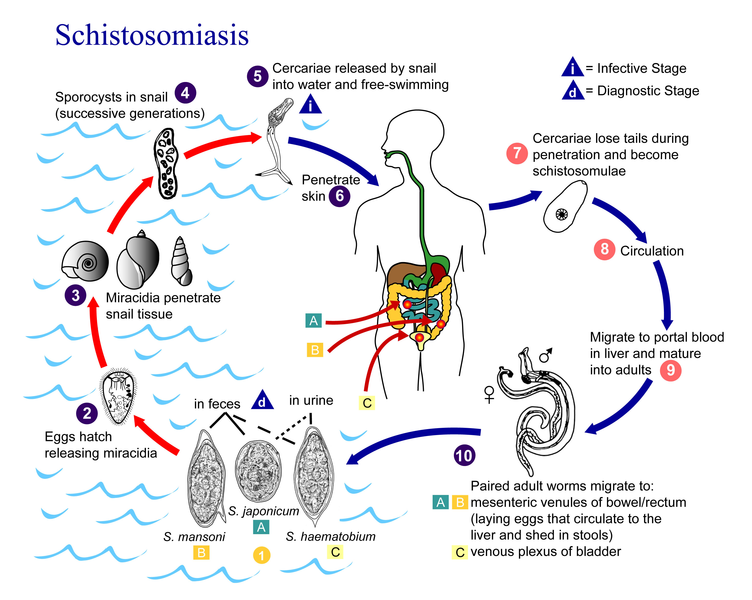Fájl:Schistosomiasis Life Cycle.png

Az előnézet mérete: 752 × 600 képpont További felbontások: 301 × 240 képpont | 602 × 480 képpont | 963 × 768 képpont | 1 280 × 1 021 képpont | 2 560 × 2 042 képpont | 2 936 × 2 342 képpont.
Eredeti fájl (2 936 × 2 342 képpont, fájlméret: 1,94 MB, MIME-típus: image/png)
Fájltörténet
Kattints egy időpontra, hogy a fájl akkori állapotát láthasd.
| Dátum/idő | Bélyegkép | Felbontás | Feltöltő | Megjegyzés | |
|---|---|---|---|---|---|
| aktuális | 2010. szeptember 21., 23:05 |  | 2 936 × 2 342 (1,94 MB) | Leyo | {{Information |Description={{en|Eggs are eliminated with feces or urine (1). Under optimal conditions the eggs hatch and release miracidia (2), which swim and penetrate specific snail intermediate hosts (3). The stages in the snail include 2 generations o |
Fájlhasználat
Az alábbi lapok használják ezt a fájlt:
Globális fájlhasználat
A következő wikik használják ezt a fájlt:
- Használata itt: ar.wikipedia.org
- Használata itt: arz.wikipedia.org
- Használata itt: ceb.wikipedia.org
- Használata itt: cs.wikipedia.org
- Használata itt: de.wikibooks.org
- Használata itt: en.wikipedia.org
- Használata itt: es.wikipedia.org
- Használata itt: fr.wikipedia.org
- Használata itt: hu.wikipedia.org
- Használata itt: ml.wikipedia.org
- Használata itt: nl.wikipedia.org
- Használata itt: pl.wikipedia.org
- Használata itt: sv.wikipedia.org
- Használata itt: uz.wikipedia.org
- Használata itt: vi.wikipedia.org


